| CAS NO: | 209984-57-6 |
| 规格: | ≥98% |
| 包装 | 价格(元) |
| 5mg | 电议 |
| 10mg | 电议 |
| 25mg | 电议 |
| 50mg | 电议 |
| 100mg | 电议 |
| 250mg | 电议 |
| 500mg | 电议 |
| Molecular Weight (MW) | 479.48 |
|---|---|
| Formula | C26H23F2N3O4 |
| CAS No. | 209984-57-6 |
| Storage | -20℃ for 3 years in powder form |
| -80℃ for 2 years in solvent | |
| Solubility (In vitro) | DMSO: 95 mg/mL (198.1 mM) |
| Water: <1 mg/mL | |
| Ethanol: 13 mg/mL (27.1 mM) | |
| Solubility (In vivo) | 30% PEG400+0.5% Tween80+5% propylene glycol: 30 mg/mL |
| Synonyms | LSN-411575; LSN-411575; LY 411575; LY-411575; LY411575; LSN 411575; LSN411575. Chemical Name: N2-[(2S)-2-(3,5-difluorophenyl)-2-hydroxyethanoyl]-N1-[(7S)-5-methyl-6-oxo-6,7-dihydro-5H-dibenzo[b,d]azepin-7-yl]-L-alaninamide InChi Key: ULSSJYNJIZWPSB-CVRXJBIPSA-N InChi Code: InChI=1S/C26H23F2N3O4/c1-14(29-25(34)23(32)15-11-16(27)13-17(28)12-15)24(33)30-22-20-9-4-3-7-18(20)19-8-5-6-10-21(19)31(2)26(22)35/h3-14,22-23,32H,1-2H3,(H,29,34)(H,30,33)/t14-,22-,23-/m0/s1 SMILES Code: C[C@@H](C(N[C@H]1C2=CC=CC=C2C3=CC=CC=C3N(C)C1=O)=O)NC([C@H](C4=CC(F)=CC(F)=C4)O)=O |
| In Vitro | In vitro activity: LY-411575 inhibits γ-secretase which can be assessed by the substrates like amyloid precursor protein (APP) and Notch S3 cleavage. LY-411575, which blocks Notch activation, results in apoptosis in primary and immortalized KS cells. Kinase Assay: Procedures for measuring γ-secretase activity in membranes prepared from HEK293 cells expressing APP have been described previously (Zhang L et al Biochemistry 40, 5049-5055). Intact HEK293 cells expressing either APP or NΔE are treated with various concentrations of LY- 411,575 for 4 hours at 37 °C. In the case of cells expressing NΔE, cells are lysed, the cell lysates are separated on a 4-12% NuPAGE gel, and the processed NICD fragment is detected via Western blot with a cleavage site-specific antibody. The inhibition of NICD production is quantified by spot densitometric analysis using FluorChem. In the case of cells expressing APP, the conditioned medium is collected, centrifuged at 10,000 × g for 5 minutes to remove cell debris, and stored at -20 °C prior to the determination of Aβ levels. Aβ40 and -42 produced in HEK293 membrane- and cell-based assays, as well as plasma Aβ40 and cortex Aβ40 from TgCRND8 mice, are analyzed without pretreatment using an electrochemiluminescence detection-based immunoassay. Plasma Aβ42 is measured by enzyme-linked immunosorbent assay. A commercially available enzyme-linked immunosorbent assay kit is used to measure cortex Aβ42 according to the manufacturer''s instructions. Cell Assay: DNA/PI staining is performed using standard methodologies. Briefly, 1 × 106 cells are permeabilized with 100% ethanol in the presence of 15% FBS. The cells are washed and then treated for 15 minutes at 37 °C with 10 mg/mL RNAse. PI (5 mg/mL) is added, and the cells incubated for 1 hour at 4 °C prior to analysis by flow cytometry with 10 000 cells analysed per gated determination. The results are confirmed using the Immunotech Annexin V staining kit following the manufacturers’ instructions. At least three independent experiments are performed showing similar results. |
|---|---|
| In Vivo | 10 mg/kg oral dose of LY-411575 decreases brain and plasma Aβ40 and -42 dose-dependently. LY-411575 reduces cortical Aβ40 in young (preplaque) transgenic CRND8 mice (ED50 ≈ 0.6 mg/kg) and produces significant thymus atrophy and intestinal goblet cell hyperplasia at higher doses (>3 mg/kg). The therapeutic window is similar after oral and subcutaneous administration and in young and aged CRND8 mice. Both the thymus and intestinal side effects are reversible after a 2-week washout period. Three-week treatment with 1 mg/kg LY411575 reduces cortical Aβ40 by 69% without inducing intestinal effects, although a previously unreported change in coat color is observed. |
| Animal model | TgCRND8 mice model |
| Formulation & Dosage | Formulated as 10 mg/mL solutions in 50% polyethylene glycol, 30% propylene glycol, 10% ethanol and diluted in 0.4% methylcellulose for dosing.; 1-10 mg/kg; oral gavage |
| References | J Biol Chem. 2004 Mar 26;279(13):12876-82; Oncogene. 2005 Sep 22;24(42):6333-44; J Pharmacol Exp Ther. 2006 Dec;319(3):1133-43. |
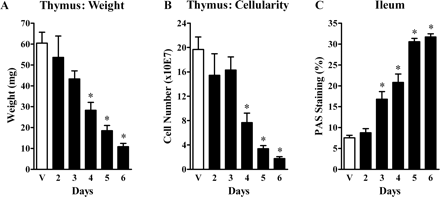 | 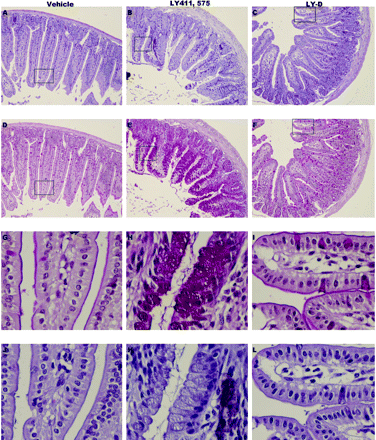 | 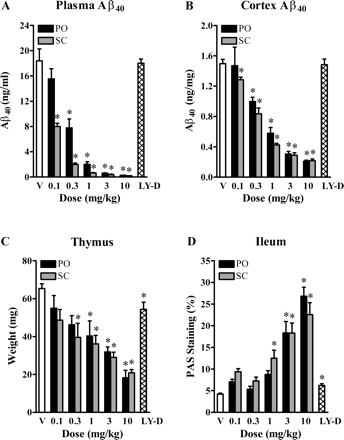 |
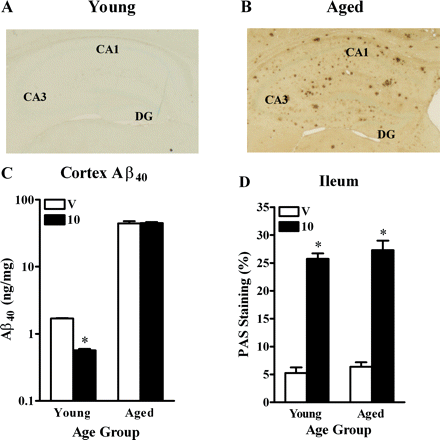 | 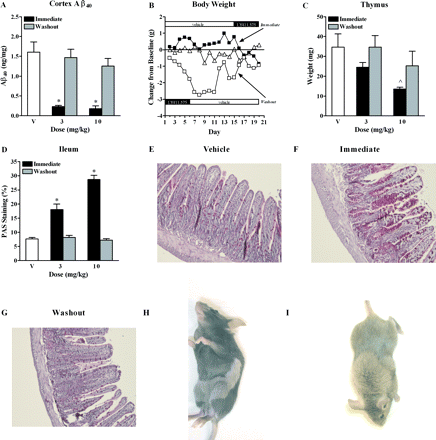 | 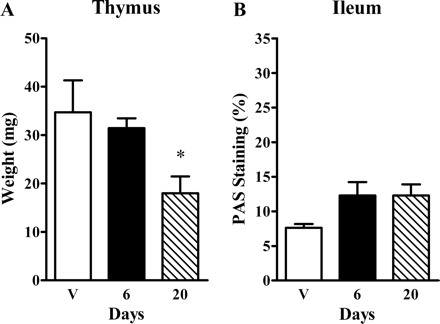 |
